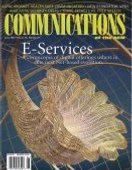June 2003 - Vol. 46 No. 6

Features
Fulfilling the Web Services Promise
E-Service: a New Paradigm For Business in the Electronic Environment
Marketing Challenges of E-Services
Data Completeness: a Key to Effective Net-Based Customer Service Systems
Technology Enablers to Recover from Failures in E-Services
The Web Services Debate: J2ee vs. .net
The Web Services Debate: .net vs. J2ee
Networks New Economical Virtual Private
Taxonomy of Security Considerations and Software Quality
Asynchronous Health Care Communication
Facilitating Tacit Knowledge Exchange
Trust in the Preservation of Digital Information
Toward Public-Key Infrastructure Interoperability
Reflections on Trusting Trust Revisited



